Discover 20 hidden attractions, cool sights, and unusual things to do in Kazan (Russia). Don't miss out on these must-see attractions: Kazan Kremlin, Qolşärif Mosque, and Church of the Exaltation of the Holy Cross. Also, be sure to include Temple of All Religions in your itinerary.
Below, you can find the list of the most amazing places you should visit in Kazan (Tatarstan).
Table of Contents
Kazan Kremlin
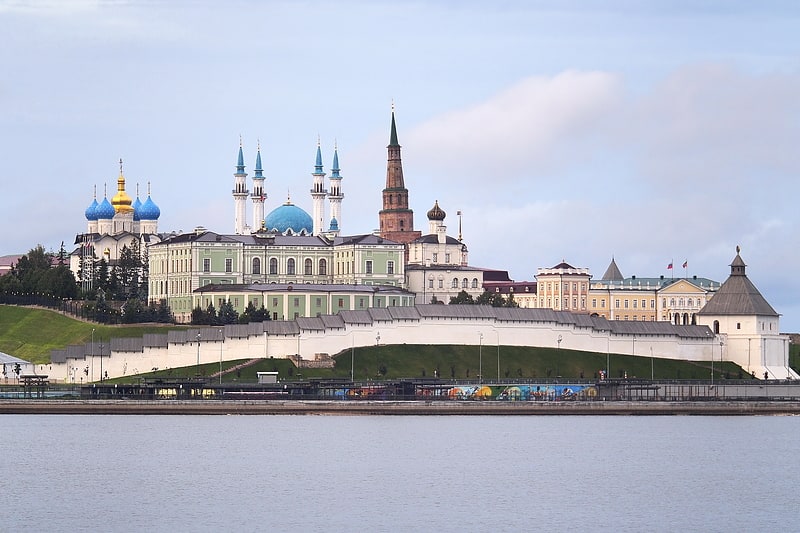
Also known as: Казанский кремль
Hilltop palace and museum complex. The Kazan Kremlin is the chief historic citadel of Russia, situated in the city of Kazan. It was built at the behest of Ivan the Terrible on the ruins of the former castle of Kazan khans. It was declared a World Heritage Site in 2000.[1]
Qolşärif Mosque

Also known as: Кул-Шариф
Blue-domed mosque on Kremlin site. The Kul Sharif Mosque located in Kazan Kremlin, was reputed to be – at the time of its construction – one of the largest mosques in Russia, and in Europe outside of Istanbul.[2]
Address: Ulitsa Sheynkmana, 420014 Kazan
Church of the Exaltation of the Holy Cross

Also known as: Храм Воздвижения Святого Креста
Catholic church in Kazan, Russia. The Church of the Exaltation of the Holy Cross is a Roman Catholic church in the city of Kazan, Tatarstan, Russia, under the Diocese of Saratov.
The first modern Catholics came to Kazan in the eighteenth century and were mainly of German origin. In 1835, the first parish was founded by Polish priests, and its parishioners gathered in private homes or temporary structures. The Catholic population, mostly of Polish origin, increased steadily, and the city of Kazan ultimately granted permission to build the church in 1855. Permission to build the church came with the conditions that the church would not stand out from the surrounding buildings and would not display a strong traditional Roman Catholic architectural character.
Kazan's Catholic parish dispersed during the era of communism and was reconvened in 1995, but the church was not returned to the Catholic community. Officials of the city instead authorized the use of a small chapel located in one of the city's cemeteries. Once restored, the chapel was consecrated by Bishop Pickel in 1998. A few years later, due to the removal of the wind tunnel from the old church, city authorities decided to allocate land in the center of Kazan to the Catholic community. Construction of the new church began in 2005 and took three years to complete.
On 29 August 2008, the new church was consecrated during a ceremony led by the Dean of the College of Cardinals, Angelo Sodano, in the presence of the Bishop Clemens Pickel, the Apostolic Nuncio Antonio Mennini, and other leaders.[3]
Address: 73 улица Островского, Kazan
Temple of All Religions

Also known as: Храм всех религий
Temple dedicated to multiple religions. The Temple of All Religions or the Universal Temple is a unique architectural complex in the Staroye Arakchino Microdistrict of Kazan, Russia. It consists of several types of religious architecture including an Orthodox church, a mosque, and a synagogue, among others. It is currently under construction since 1992, started by local artist and philanthropist Ildar Khanov. The structure now serves as a cultural center and a residence for Khanov's brother and sister, who both continue to serve as guides and supervisors of the complex.
Khanov was known for his efforts in the treatment of alcoholism, drug addiction, and various other addictions. His patients helped him to maintain and develop the Temple, either by direct involvement in the construction work or through sponsorship.
The structure is not an active temple of any religion, but rather, as Khanov described its mission, a "temple of culture and truth". It has become a popular landmark in the city of Kazan, which takes pride in the peaceful combination of different cultures (Islamic Tatar culture, Orthodox Russian, and others). The Temple is often visited by local and overseas tourists.
Khanov said that eventually the structure should have 16 cupolas, corresponding to the 16 major world religions, including past religions that are no longer practiced.[4]
Address: Staroye Arakchino, 4, 420031 Kazan
Basket-Hall Kazan
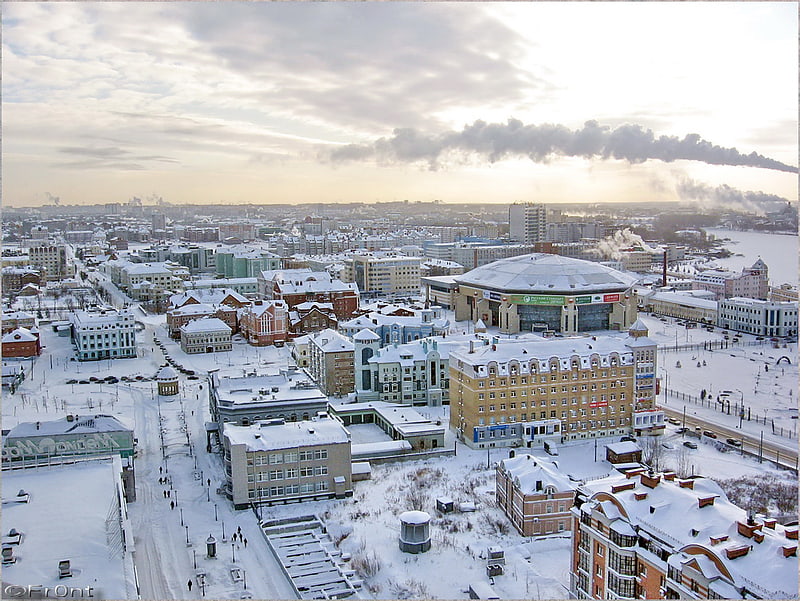
Also known as: Баскет-холл
Arena in Kazan, Russia. Basket-Hall Kazan is a basketball specialized indoor arena that is located in Kazan, Russia. It is primarily used for basketball, but it can also be used for volleyball and concerts. It contains two basketball halls.
The large main hall, called Basket-Hall 1, has a seating capacity of 7,482 people for basketball and 8,000 for concerts. The large main hall also includes an amphitheater section. The small hall, called Basket-Hall 2, which is mainly used for training, has a seating capacity of 1,500.[5]
Address: Spartakovskaya St., 1, Kazan
Arskoe Cemetery
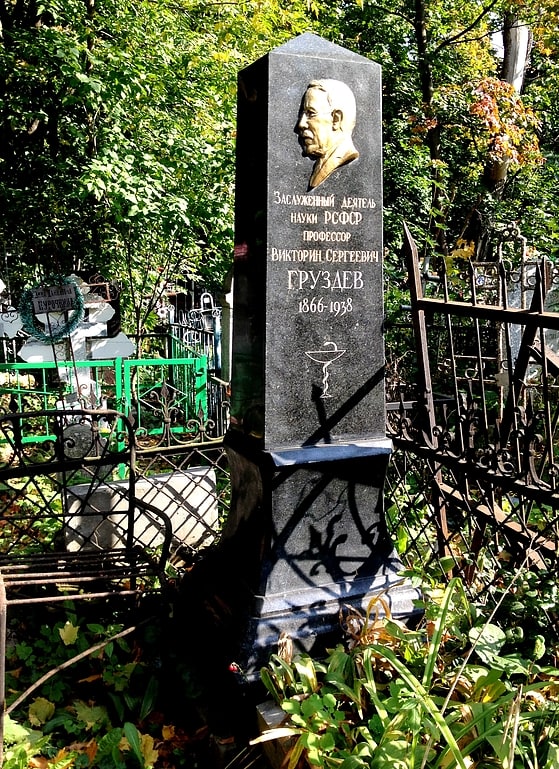
Arskoe Cemetery is the central necropolis in Kazan, and is located in the city's Vakhitovsky City District, to the northeast of Kazan's centre in Tararstan, Russia.
The cemetery church was built in 1796, and was the only church in Kazan to remain open during the Soviet era.
The cemetery was already in existence in 1766, and is shown on a map of the city from that year. The first recorded burials in the cemetery date from 1774.
Originally several separate cemeteries, expansion has led them merging into one necropolis, with separate section for Orthodox, Catholic, Jewish and Lutheran burials. The complex also includes a military cemetery. In total, over 300,000 people have been buried at Arskoe.[6]
Märcani Mosque
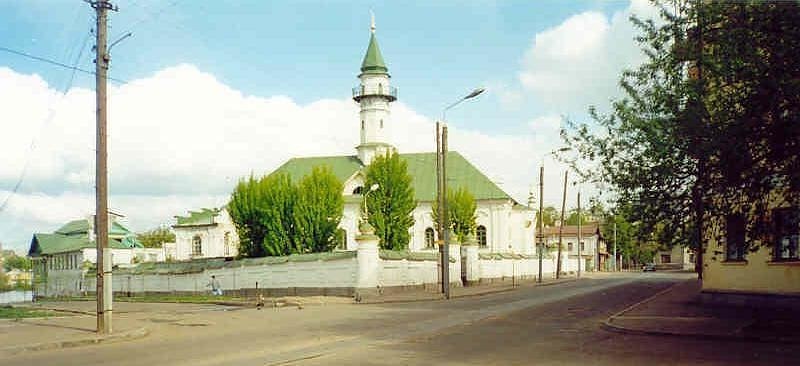
Also known as: Мечеть аль-Марджани
Mosque. The Märcani Mosque, also spelled al-Marjani, Mardjani and Mardzhani is a mosque in Kazan, Russia, built in 1766-1770 by Catherine the Great's authority and on the city's population's donations.[7]
Address: Kayuma Nasyri St., 17, 420021 Kazan
Kaban Lakes

Also known as: Кабан
City views and an adjacent promenade. The Kaban Lakes are a system of lakes in Kazan, Republic of Tatarstan, Russia that includes Nizhny Kaban, Verkhny Kaban, and Sredny Kaban. With a combined area of 1.86 square kilometers, they comprise the biggest lake in Tatarstan.
The lakes are connected with the Kazanka River by the Bolaq channel and a subterranean channel from Bolaq-Qazansu. They are also connected with the Volga River by the city's sewage system.
The Thousandth Anniversary of Islam Mosque is situated on the bank.
The medieval Volga Bulgarians' graves which date back to 12-13th century were founded on the banks of Arğı Qaban.
One legend claims that, in the days before the Khanate of Kazan fell, the Khans threw all their valuables into the lakes.
Another legend about the origin of the lakes' names claims that, at the Mongol invasion of Volga Bulgaria, the Bulgarian prince Qabanbäk, escaped from Bilär city (or in Bolghar), fled to the banks of the lake and built a castle. Another version is that he founded İske Qazan.
Tatar myth also places Zilant, who had been transformed to Diü, as the ruler of the mythological Underwater Kingdom of Qaban.[8]
The Thousandth Anniversary of Islam Mosque

Also known as: Закабанная мечеть
Historic mosque with unique architecture. The Thousandth Anniversary of Islam Mosque or The Anniversary Mosque was built in Kazan, Tatarstan, Russia to commemorate the thousandth anniversary of the conversion of the Volga Bulgars in to Islam in 922. The alternative name of the mosque, and the most commonly used name, is The Mosque Across the Kaban, because most of Kazan's mosques are situated on the other side of the Kaban, where the Tatar community was traditionally located before the October Revolution. The part where the mosque was situated was inhabited predominantly by the Russian community.[9]
Address: 26 улица Хади Такташа, Kazan
Nurulla Mosque

Also known as: Мечеть Нурулла
Mosque in Kazan, Russia. The Nurulla Mosque is a mosque in Kazan, Russia.[10]
Address: Moskovskaya, 74, 420021 Kazan
Galiaskar Kamal Tatar Academic Theatre
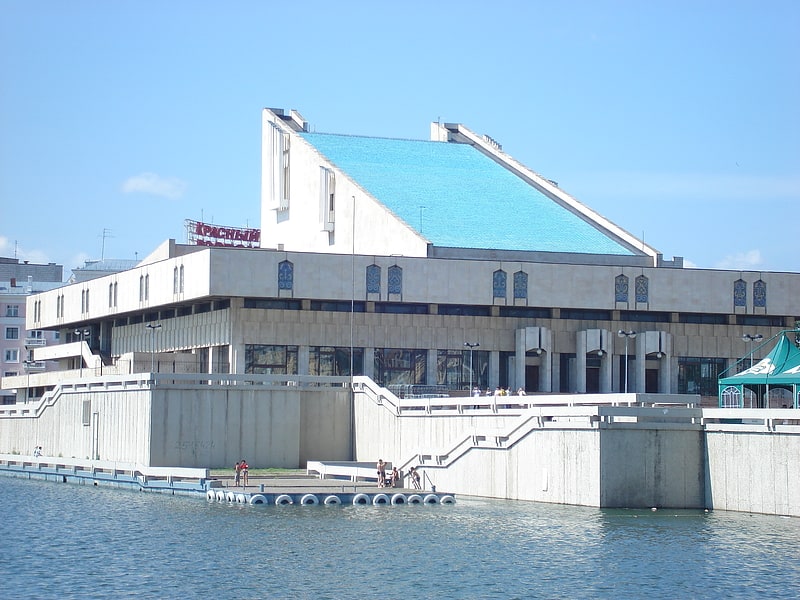
Also known as: Татарский театр имени Галиасгара Камала
Theater in Kazan, Russia. The Galiaskar Kamal Tatar Academic Theatre is the leading Tatar theater in Kazan, Russia. Named after the playwright Galiaskar Kamal, it was founded on December 22, 1906.
The first known Tatar theatrical efforts were during the 19th century when Tatar amateur theater groups emerged in some cities and towns of Russia with sizable Tatar populations. The first published Tatar-language play was "Unhappy Girl" (1886) by Gabdrakhman Ilyasi (1856–1895), written perhaps under the influence of the first Turkish playwright İbrahim Şinasi and his play "Şair Evlenmesi" (A Poet's Marriage) which was published in 1860. Both plays deal with the problem of arranged marriages which were very common at that time.
In the middle of the 19th century, Tatar amateur theater groups staged free performances in private houses and were attended by very few people. Their repertoire usually included the plays of Russian and foreign playwrights. The first public performance of a Tatar play in modern times took place in 1906 and was organized by the group "Sayar" (The Traveler). "Sayar" eventually became the leading Tatar professional theater company. In 1939 it was renamed after the playwright Galiaskar Kamal. In 1987, the company moved to its current building on the shore of the lakes Qaban.
The theater's current repertoire consists mostly of plays written by Tatar playwrights but includes many plays of Russian and foreign playwrights as well.
The theater provides special translation devices to audience members who do not understand Tatar.
One of the peculiar features of Tatar culture during Soviet times was that Tatarstan, being an "autonomous republic" rather than a "union republic" within the USSR, was not allowed by Moscow to have its own film studio (whereas each "union republic" was entitled to one). As a result, most Tatar actors, producers and directors could develop their talents only within the realm of theater. All artistic talent in those fields of self-expression was concentrated exclusively in theater rather than both theater and film. This fact might explain the extraordinary commercial success of the Tatar theater and the remarkably high quality of its productions, as well as the enormous popularity of theater as a genre among Tatars.[11]
Address: Ul. Tatarstan (ул. Татарстан), 1, Kazan
Millennium Bridge

Also known as: Мост Миллениум
Cable-stayed bridge in Kazan, Russia. The Millennium Bridge is a cable-stayed bridge that spans Kazanka River, in Kazan, Russia. Its name originates from Kazan's thousandth anniversary, widely celebrated in 2005 and the shape of its M-like pylon.
The construction of the bridge began in 2004, the first part was ready in 2005 and the second part in 2007. The building cost was approximately 94 million euros.
The bridge is 835 metres (2,740 ft) long. The main part of this bridge is the 45-m pylon which looks like the letter M. This form originates from Meñyıllıq (Cyrillic: Меңъеллык), the Tatar for thousand years old, or its Latin variant Millennium. The roadway carries three lanes of traffic and a pedestrian walkway in each direction. The bridge connects Gorky park and Fatix Ämirxan Avenue.[12]
Äcem Mosque

Also known as: Азимовская мечеть
Mosque in Kazan, Russia. Äcem Mosque; is a prominent cathedral mosque in Kazan, Tatarstan, Russia. It is located in the southern part of the Old Tatar Quarter, a historic district populated by Tatars, and is one of about a dozen historical mosques in the district.[13]
Address: Fatkullina, 15, 420021 Kazan
Bornay Mosque
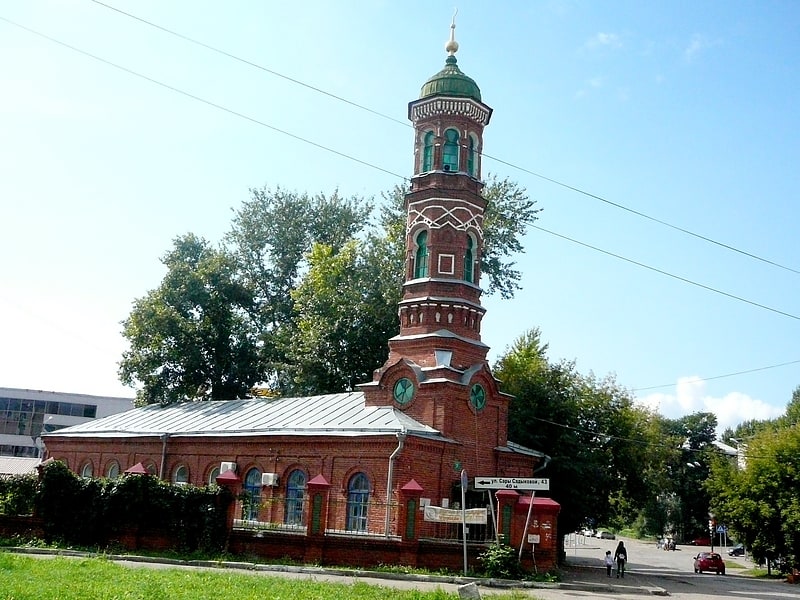
Also known as: Бурнаевская мечеть
Mosque in Kazan, Russia. The Bornay Mosque, also spelled Burnayevskaya Mosque is a mosque in Kazan, Tatarstan, Russia.[14]
Address: ул. Ахтямова, 7, Kazan
Bulgar Mosque
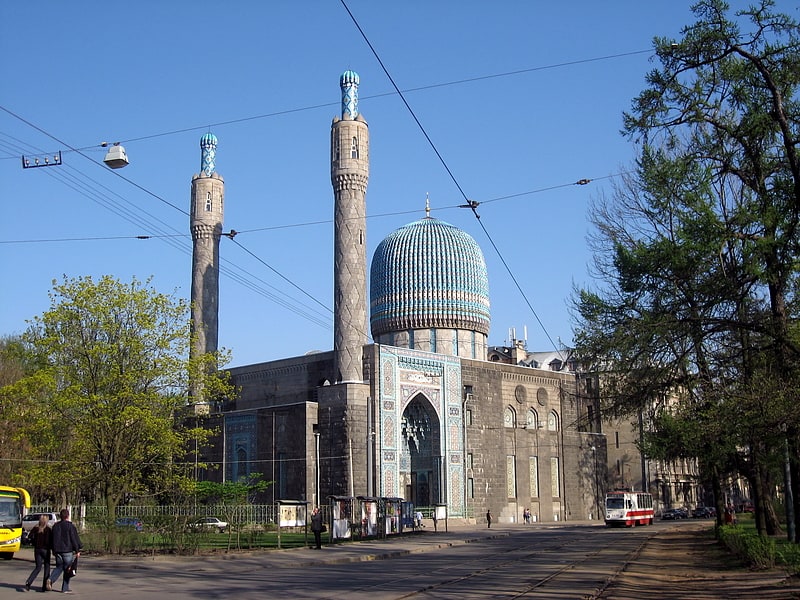
Also known as: Мечеть Булгар
Mosque in Kazan, Russia. Bulgar Mosque, is a mosque in Kazan, Tatarstan, Russia.
The building is located in a new part of the Tatar capital, in the Novo-Savinovsk district. The mosque is constructed in order to commemorate the 1100th anniversary of the Islamisation of Volga-Bulgaria, and opened in 1993. For most of the construction work is responsible the first imam, Farooq hazrat Fazanov. After him is named the madrasah of the mosque.
The construction of the Bulgar Mosque started in the beginning of the 1990s. The piece of land that was meant for the building, was a desolate swampy place. That's why the first job of the construction workers was to clear the terrain. The architects of the Bulgar Mosque are Valeriy Voginov, and Yevgeni Prokofiev.
The Muslim mosque has a very original composition. In it are combined different objects varying by height, that are cut into each other diagonally from southwest to northeast. As is tradition, the mosque has separate entrances and rooms for men and women. The main prayer hall is on the second floor, while the room for women is on the first. The minaret is 35 meters high. The whole complex is constructed with white bricks, that seem to be in harmony with the apartment blocks that are around the mosque. Specialists describe the Bulgar Mosque as a modern Muslim mosque, with a rationalist design.[15]
Soviet Lifestyle Museum
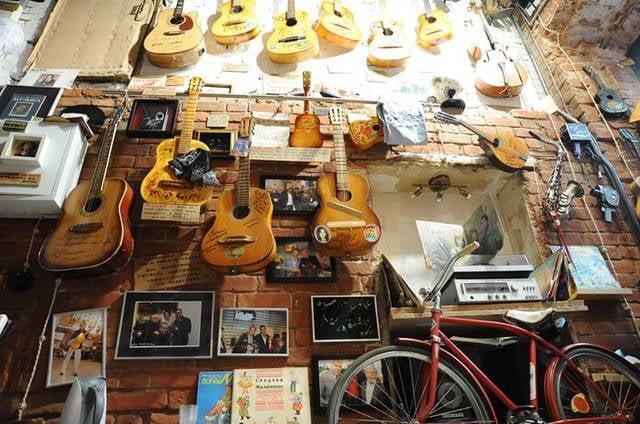
Museum, Specialty museum
Address: Ostrovskogo, 39, 420111 Kazan
National Library of the Republic of Tatarstan

Also known as: Национальная библиотека Республики Татарстан
Library in Kazan, Russia. The National Library of the Republic of Tatarstan is the main state book depository in Tatarstan for national, republican, Russian and foreign publications. It holds over three million documents, including over 100,000 documents in the Tatar language and another 100,000 in foreign languages. It “is the centre of the propagation of the culture of the Tatar people, a unique public library performing the functions of acquisition, preservation and distribution of Tatar books and literature of the republic.”
The library is located in Kazan, the capital of Tatarstan at Kremlevskaya St. 33. It is housed in a well-known historical mansion - Ushkova house. It is open to the public.
The library officially opened as the city public library on 10 January 1865. It was started based upon the collection of Ivan Vtorov, a local bibliophile. The collection of 1,908 volumes (903 titles) was donated to the city by his son in 1844.[16]
Address: Кремлёвская улица, 33, Kazan
Söyembikä Tower
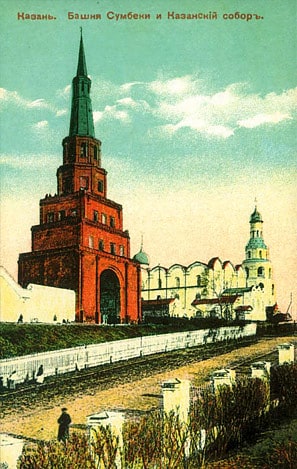
Also known as: Башня Сююмбике
Historical place in Kazan, Russia. Söyembikä Tower, also called the Khan's Mosque, is probably the most familiar landmark and architectural symbol of Kazan.
Once the highest structure of that city's kremlin, it used to be one of the so-called leaning towers. By 1990s, the inclination was 198 centimeters. Diverse stabilization methods were used to straighten the tower in the 1930s and 1990s, and it no longer leans.
The tower's construction date is enshrouded in mystery. Several scholars date its construction to the turn of the 18th century, when tiered towers were exceedingly popular in Russia.
A legend postulates that the tower was built more than a century earlier by Ivan the Terrible's artisans in just a week's time. As the legend goes, the Kazan queen Söyembikä threw herself down from the highest tier, hence the name. This legend has nothing to do with the real history of the tower because Söyembikä was forcibly detained by Muscovite forces in 1551 and moved to the city of Kasimov and died years later. The legend was popular since the early 18th century.
Some even go as far as stating that the tower is the only extant structure from the pre-Russian Tatar citadel. If the tower really reflects some original features of Tatar architecture, then its design should have certainly influenced that of the Kremlin towers in Moscow. Supporters of the theory point out that the only similar structures were built in Central Asia, which was politically and culturally connected with the derelict Khanate of Kazan. Several facts point to the validity of this theory: the size of the masonry, the absence of documentary evidence supporting Russian building, the respect paid to the tower by the local Tatar population, and so forth.
In the Imperial period, the tower used to be topped with a double-headed eagle, which the Bolsheviks replaced with a red star. It is currently crowned with a Muslim crescent.
In the early twentieth century, the architect Alexey Shchusev reproduced the structure's outline in the Kazan Rail Station of Moscow.[17]
Saints Peter and Paul Cathedral

Also known as: Петропавловский собор
Notable 1700s Russian Orthodox cathedral. Saints Peter and Paul Cathedral is a Russian Orthodox church in Kazan. It is one of the most famous churches in Naryshkin Baroque.
The temple is consecrated in honour of heavenly Tsar Peter I of Russia patron.
Saints Peter and Paul Cathedral is built in 1722. Constructing were operated merchant Ivan Afanasievich Mikhlyaev the head imperial factories in Kazan. Most likely, oriental-like cathedral and its bell tower were constructed by in common Moscow and Kazan masters.[18]
Address: Musy Dzhalilya St., 21, 420111 Kazan
Iske Tash Mosque
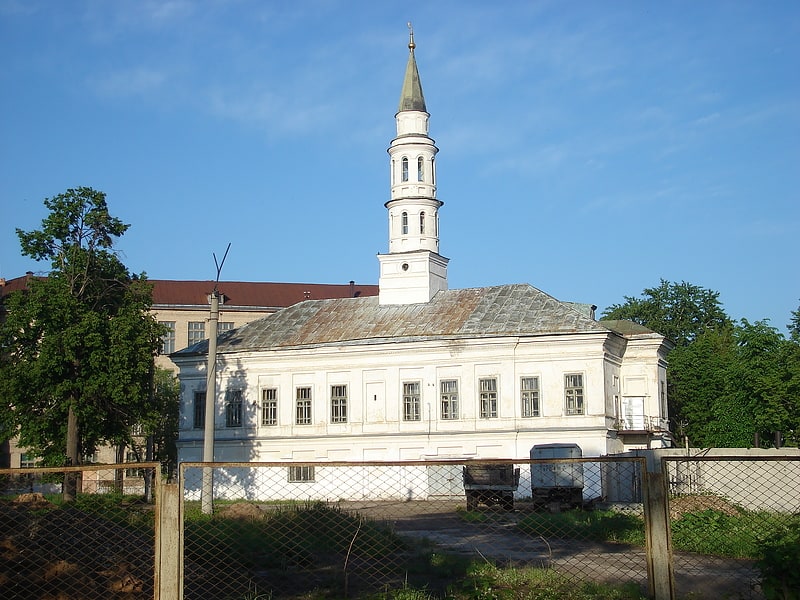
Also known as: Мечеть Иске-Таш
Mosque in Kazan, Russia. The İske Taş or Iske Tash Mosque, also the Old Stone Mosque or the Mosque of the Old Stone, formerly known as The Ninth Cathedral Mosque, The Big Stone Mosque, is a mosque in Kazan, Russia.[19]
Address: 34А к1 улица Мазита Гафури, Kazan